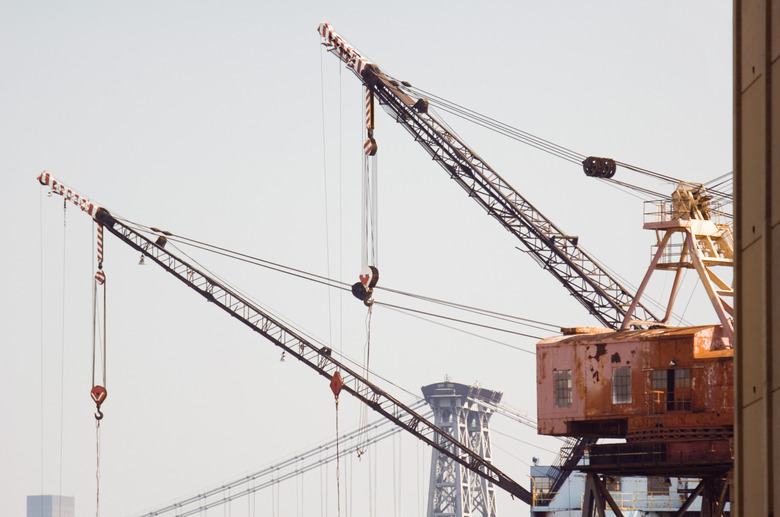Experiments With Pulleys
Pulleys easily demonstrate otherwise-difficult-to-comprehend concepts in physics. Furthermore, experimenting with pulleys can help make your own life easier. For example, pulleys can make moving material loads for home improvement projects much easier, because every pulley in a system reduces the required work force by half. Anytime you need to lift double your body weight, just add a pulley to the lift system.
Understanding Pulley Power
Understanding Pulley Power
Tie one end of a rope to a broomstick, and have one person hold that broomstick vertically. Have a second person hold a second broomstick — also vertically — and have these two people stand a few feet apart. Wrap the rope around the second broomstick, and stand beside the person holding the first broomstick. Now, ask your two helpers to resist while you pull on the rope to try to pull them together. Pull, and then wrap the rope back around the first broomstick and position yourself beside the person holding the second broomstick. Pull again with the same force, and ask your helpers how it felt. They should feel as though they were being pulled significantly harder the second time.
Pencil Pulley System
Pencil Pulley System
Tie one end of a string around a small object, such as the handle of a coffee mug, and — to acknowledge the object's weight — lift the object by pulling the string upward. Insert a pencil through the center of an empty thread spool. Have a partner hold the pencil horizontally by its ends. Loop the string over the spool, and then pull down on the end of the string. The spool will serve as a pulley and help lift the object. Notice how much easier it is to lift the object with the help of the pulley. The single pulley lessened your required work by 50 percent.
Measuring Elevator Energy
Measuring Elevator Energy
Mount a large eye-hook to an overhead beam, and then mount a pulley beside the hook. Attach the hook of a second pulley to the handle of a 3-gallon bucket containing a 20-pound weight, and set the bucket beneath the mounted eye-hook. Tie one end of a thin rope to the eye-hook. Then, track the rope around the pulley wheel attached to the bucket and then up around the pulley wheel mounted overhead. Attach a spring scale to the free end of the rope. Pull downward on the hook of the spring scale to lift the bucket. As you do this, the scale will show the weight of the force you are using to lift the bucket.
Pulleys for Mechanical Processes
Pulleys for Mechanical Processes
Pulleys are also used with belts to turn wheels in machines. Stretch a rubber band around two wheels on the same side of a pair of roller skates. Turn one of the bound wheels, and notice how the other bound wheel turns as well, and in the same direction. Predict how the second wheel would turn if you put a twist in the band. Remove the band, and then place it around one the front wheels on one side, but then twist it and stretch it around the back wheel on the opposite side. (Using wheels on opposite sides will keep the band from binding against itself.) Turn the front wheel, and notice how the back wheel turns in the opposite direction.
Cite This Article
MLA
Cascio, Christopher. "Experiments With Pulleys" sciencing.com, https://www.sciencing.com/experiments-pulleys-13638/. 24 April 2017.
APA
Cascio, Christopher. (2017, April 24). Experiments With Pulleys. sciencing.com. Retrieved from https://www.sciencing.com/experiments-pulleys-13638/
Chicago
Cascio, Christopher. Experiments With Pulleys last modified March 24, 2022. https://www.sciencing.com/experiments-pulleys-13638/
